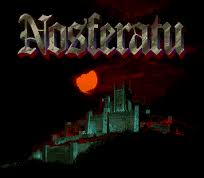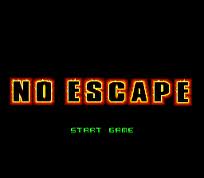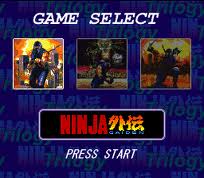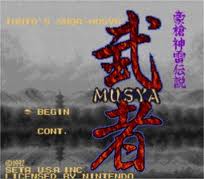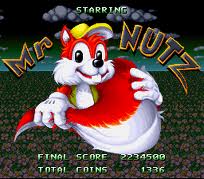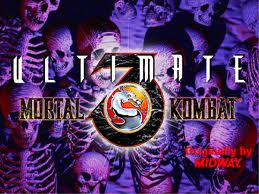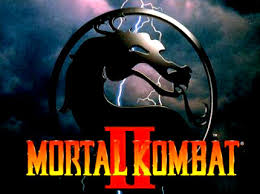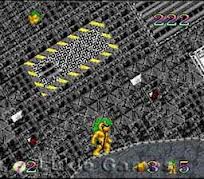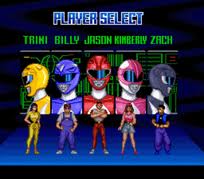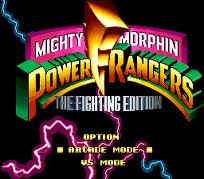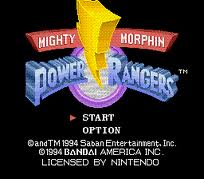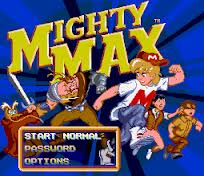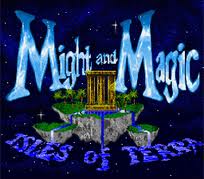Category: Action
732 game(s)All Action games for SNES
Nosferatu
Nosferatu (ノスフェラトゥ?) is an action platform game, developed and published by SETA Corporation, which was released in 1994 exclusively for the Super NES.
The player controls a young man known as Kyle, who rides to the vampire Nosferatu's castle in order to defeat him and save his beloved girlfriend Erin from his clutches.No Escape
No Escape is a game Based on the Hollywood action-thriller, NO ESCAPE puts you in the shoes of Robbins, an inmate on the island penal colony of Absollom. Free to travel anywhere on the island - except off! - you'll come face-to-face with ultra-realistic characters rotoscoped from real actors and confront countless deadly traps. You'll be forced to fight or outsmart gangs of savage Outsiders. Only the Insider's Camp gives you a place to rest, exchange information and trade items necessary for your escape. A detailed warden's overhead map lets the player choose which part of the island to explore next. If you gather together the right pieces as you proceed, you'll ultimately confront a final choice... to boldly break free in the prison helicopter or slip quietly away in a specially designed stealth boat. Unlike in the movie, the ending to this story is up to you.
Ninja Gaiden Trilogy
Ninja Gaiden Trilogy was a game released on August 10, 1995 for the Super Nintendo Entertainment System that included all three of the original NES games with remastered graphics and music and tweaks in the gameplay, notably, the third game now has unlimited continues like the other games.
Though it is on a more powerful console, the games suffered from slowdown, unresponsive controls and finicky hit detection. There was also censorship added in some areas included changing blood from red to green.
Ninja Gaiden Trilogy also included a password system for all three games (Ninja Gaiden, Ninja Gaiden II: The Dark Sword of Chaos, Ninja Gaiden III: The Ancient Ship of Doom) which would let you could continue where you left off.
The game was also released as Ninja Gaiden Trilogy in the PAL Region even though when you played one of the games, the title still read Shadow Warriors, even on the third game which wasn't originally released in the PAL Region.
Musya: The Classic Japanese Tale Of Horror
Musya: Imoto's Saga or Musya: The Classic Japanese Tale of Horror, known in Japan as Gōsō Jinrai Densetsu Musya (豪槍神雷伝説「武者」 Gōsō Jinrai Densetsu Musha, roughly "Brave Spearman Jinrai's Legend - Warrior"), is a video game for the Super Famicom and the Super Nintendo Entertainment System by Datam Polystar. Seta U.S.A. translated the game into English.
The name Musya is romanized by the English translators in the Kunrei-shiki style (Musya) instead of the Hepburn romanization style (Musha).
The story is about a pikeman (described as a spearman in the Japanese version and a pikeman in the English version) named Imoto (Jinrai (神雷) in the Japanese version), who must descend to the abyss to save Shizuka, a maiden. After Imoto survives a battle in which all other combatants perish, he travels to Tengumura Village, where he collapses. The mayor, Akagi (The mayor is not named in the Japanese version), greets Imoto and tells him that Shizuka (しずか) needs to be rescued. Imoto heads into Tengumura Cavern (known in the Japanese version as Kihōshōnyūdō (鬼宝鍾乳洞)).
Imoto, bearing 16 units of health (Qi (気 Ki, meaning "life energy")), dies when the health is depleted. He carries up to three lives (命 Inochi). The game starts with three lives; once the life count is zero and Imoto dies, the game ends.
When Imoto defeats a boss, the words "monster defeated" (怨霊調伏 Onryō Chōfuku, "Vengeful Ghost Submitted") appear and the player gains a scroll containing a new spell.
Musya uses Japanese kanji characters in various parts of the game to represent modes and levels. For instance, in the Japanese version of the game, the English-language word "Pause" is not used; instead the word Ippuku (一服, meaning "break" or "to take a break") appears from both ends of the screen. In the English-language version, the word "Pause" forms under the word "Ippuku," with the "Pa" under the "一" and the "Use" under the "服."
Mr. Nutz
Mr. Nutz is a side scrolling, 2D platformer video game published by Ocean Software. It was first released for the Super Nintendo Entertainment System in 1993[citation needed], then later released for the Mega Drive and Game Boy in 1994[citation needed], then Sega Channel in 1995, followed by Game Boy Color in 1999, and Game Boy Advance remake in 2001.
The player controls the one player character, Mr. Nutz an Anthropomorphic red squirrel wearing shoes, gloves and a cap through six themed levels. The end goal is to stop Mr. Blizzard, a yeti, who is the final boss and is trying to take over the world by using his magic powers to turn it into a mass of ice. The game shares similarities with other platformers of the same time, being that jumping is the main technique used in the game to navigate both fixed and moving platforms and defeat or avoid most enemies. Ammunition, in the form of nuts, can be collected and thrown at enemies.
Ocean released in 1994 another game on the Amiga under the name Mr. Nutz: Hoppin' Mad. Developed by Neon Studios, it featured the same titular character but with different, faster and more wide-open gameplay, unrelated levels and enemies, another story, and a large overworld map instead of a linear path to follow in a mini-map. This game was also going to be released for the Sega Mega Drive in 1995 as Mr Nutz 2, but it got shelved. A playable build exist, leaked in the form of source code and compiled upon.
Ultimate Mortal Kombat 3
Ultimate Mortal Kombat 3 (UMK3) is a fighting game in the Mortal Kombat series, originally developed and released by Midway Games to arcades in 1995. It is an update of 1995's earlier Mortal Kombat 3 (MK3) with an altered gameplay system, additional characters like the returning favorites Kitana and Scorpion who were missing from MK3, and some new features.
Several home port versions of the game were soon released after the arcade original, although none were completely identical to the arcade version. Some later home versions followed the arcade original with more accuracy. Some versions were released under different titles: Mortal Kombat Advance for the Game Boy Advance in 2001 and Ultimate Mortal Kombat for the Nintendo DS in 2007. The iPhone/iPod version recreating the game using a 3D graphics engine was released by Electronic Arts in 2010.
Ultimate Mortal Kombat 3 was mostly well received and has been considered a high point for the Mortal Kombat series. However, the iOS remake and some other home versions were received poorly in comparison to the arcade game.
Ultimate Mortal Kombat 3 was updated to include more content from previous games in the series as part of the console-exclusive Mortal Kombat Trilogy in 1996. The 2011 compilation Mortal Kombat Arcade Kollection includes an emulation of UMK3 as well as the first Mortal Kombat and Mortal Kombat II.
Mortal Kombat II
Mortal Kombat II (commonly abbreviated as MKII) is a competitive fighting game originally produced by Midway Games for the arcades in 1993. It was later ported to multiple home systems, including the PC, Amiga, Game Boy, Sega Game Gear, Sega Genesis, Sega Saturn, Super Nintendo Entertainment System, and various PlayStation consoles, mostly in licensed versions developed by Probe Entertainment and Sculptured Software and published by Acclaim Entertainment.
Mortal Kombat II was the second game in the Mortal Kombat series, improving the gameplay and expanding the mythos of the original Mortal Kombat, notably introducing more varied Fatality finishing moves and several iconic characters, such as Kitana, Mileena, Kung Lao, and the series' recurring villain, Shao Kahn. The game's plot continues from the first game, featuring the next Mortal Kombat tournament set in the otherdimensional realm of Outworld, with the Outworld and Earthrealm representatives fighting each other on their way to challenge the evil emperor Shao Kahn.
The game was an unprecedented commercial success and was acclaimed by most critics, receiving many annual awards and having been featured in various top lists in the years and decades to come, but also perpetuating a major video game controversy due to the continuously over-the-top violent content of the series. Its legacy includes spawning a spin-off game Mortal Kombat: Shaolin Monks and having the greatest influence on the 2011 reboot game Mortal Kombat, as well as inspiring numerous video game clones.
Mortal Kombat
Mortal Kombat is an arcade fighting game developed and published by Midway Games in 1992 as the first title in the Mortal Kombat series. It was subsequently released by Acclaim Entertainment for nearly every home video game platform of the time.
The game introduced many key aspects of the Mortal Kombat series, including the unique five-button control scheme and gory finishing moves. The game focuses on the journey of the monk Liu Kang to save Earth from the evil sorcerer Shang Tsung, ending with their confrontation in the tournament known as Mortal Kombat. Mortal Kombat became a best-selling game and remains one of the most popular fighting games in the genre's history, spawning numerous sequels and spin-offs over the following years and decades, beginning with Mortal Kombat II in 1993, and together with the first sequel was the subject of a successful film adaptation in 1995. It also sparked much controversy for its depiction of extreme violence and gore using realistic digitized graphics, resulting in the introduction of age-specific content descriptor ratings for video games.
Mohawk & Headphone Jack
Mohawk & Headphone Jack is a 1996 2D rotational game released for the Super Nintendo Entertainment System.
The game was developed by Solid Software, published by THQ and distributed by Electro Source. The programming credit for the game is held by D. Scott Williamson. The game spins around and around wildly in a circle, changing the rotation of the map also, and making it difficult to continue in the right direction. Rock music plays in the background as one or two players attempt to negotiate a treacherous series of platforms throughout the games' 14 levels.
Mighty Morphin Power Rangers: The Movie
Mighty Morphin Power Rangers: The Movie (also known as Power Rangers: The Movie) is a 1995 American superhero film based on the television series Mighty Morphin Power Rangers. The film stars the regular television cast of Karan Ashley, Johnny Yong Bosch, Steve Cardenas, Jason David Frank, Amy Jo Johnson, and David Yost. The allies and villains are Australian and English actors. It was produced by Saban Entertainment and Toei Company. Filming took place in both Sydney and Queensland, Australia and the film was released by 20th Century Fox on June 30, 1995. Much like the television season that followed the release, the film used concepts from the Japanese Super Sentai Series Ninja Sentai Kakuranger.
Despite a mixed reaction by critics, the film went on to receive a cult following thanks to the popularity of the TV series. It also grossed $38,187,431 theatrically in the U.S. and $66,433,194 worldwide, making it a financial success.Mighty Morphin Power Rangers: The Fighting Edition
Mighty Morphin Power Rangers: The Fighting Edition is a 2D competitive fighting video game based on the Mighty Morphin Power Rangers television series that was released for the Super Nintendo Entertainment System developed by Natsume and published by Bandai in 1995. Unlike previous Power Rangers video games, which had the player controlling the titular heroes, the player controls their giant robots (known as Zords) in this title. The developers would later use the same engine for the Super Famicom fighting game Shin Kidō Senki Gundam Wing: Endless Duel.
Saban's Power Rangers Zeo: Battle Racers
Saban's Power Rangers Zeo: Battle Racers is a Super NES vehicular combat video game released in September 1996 by Bandai that has elements of a racing game.
Mighty Morphin Power Rangers
Mighty Morphin Power Rangers is the title of five different video games based on the television series of the same name, which were released for the Sega Genesis (a.k.a. Mega Drive), Super Nintendo Entertainment System, Game Boy, Game Gear, and Sega CD. The Nintendo versions of the game were released by Bandai, while the Sega versions were published by Sega themselves.
Mighty Max
Mighty Max is an Action game, developed by WJS Design and published by Ocean, which was released in Europe in 1994.
Might and Magic III: Isles of Terra
Might and Magic III: Isles of Terra is the third game in the role-playing video game series Might and Magic. Released in 1991, it is the predecessor to Might and Magic IV: Clouds of Xeen and the sequel to Might and Magic II: Gates to Another World.
